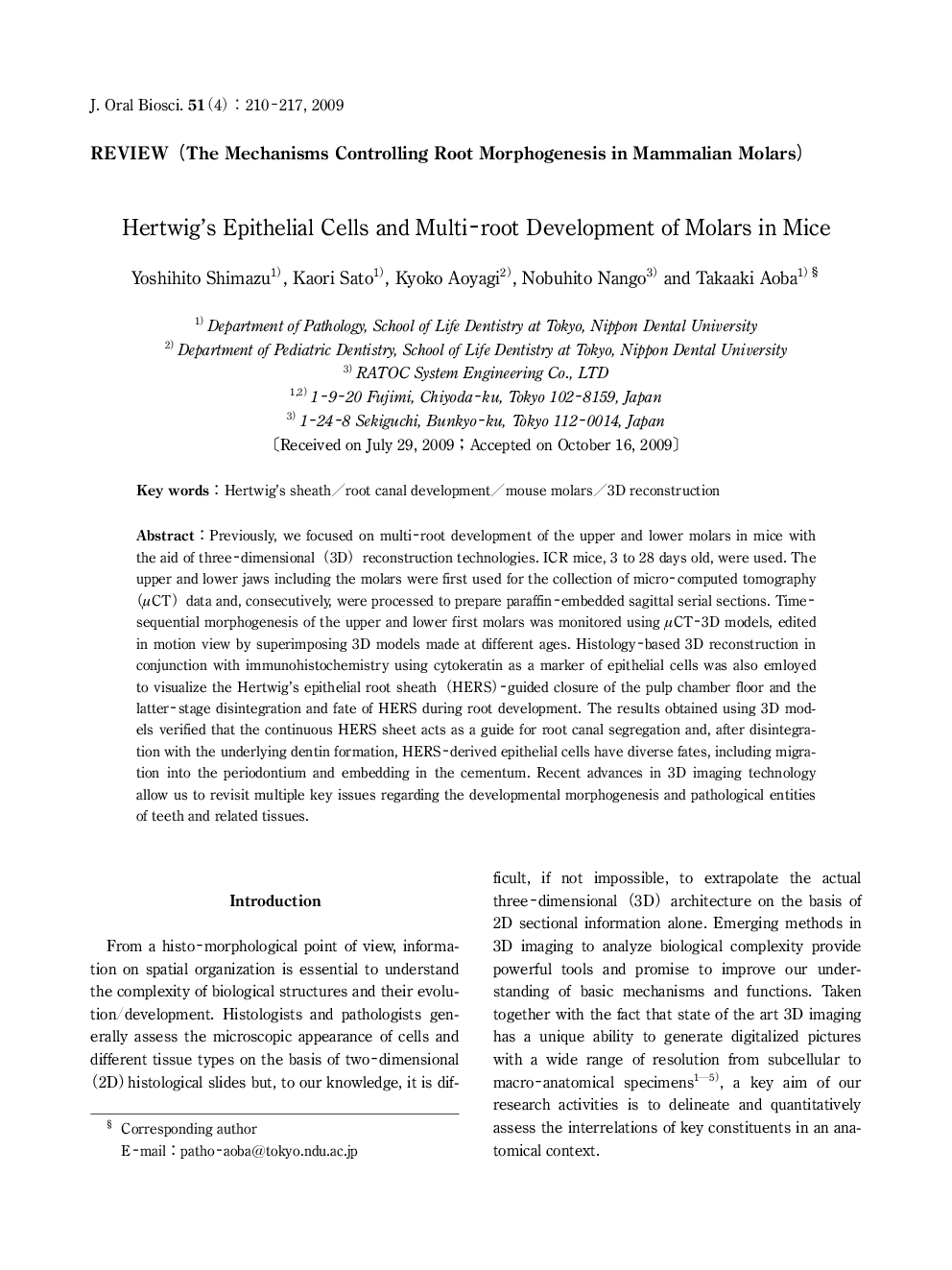| Article ID | Journal | Published Year | Pages | File Type |
|---|---|---|---|---|
| 2777001 | Journal of Oral Biosciences | 2009 | 8 Pages |
Previously, we focused on multi-root development of the upper and lower molars in mice with the aid of three-dimensional (3D) reconstruction technologies. ICR mice, 3 to 28 days old, were used. The upper and lower jaws including the molars were first used for the collection of micro-computed tomography (μCT) data and, consecutively, were processed to prepare paraffin-embedded sagittal serial sections. Timesequential morphogenesis of the upper and lower first molars was monitored using, μCT-3D models, edited in motion view by superimposing 3D models made at different ages. Histology-based 3D reconstruction in conjunction with immunohistochemistry using cytokeratin as a marker of epithelial cells was also emloyed to visualize the Hertwig's epithelial root sheath (HERS)-guided closure of the pulp chamber floor and the latter-stage disintegration and fate of HERS during root development. The results obtained using 3D models verified that the continuous HERS sheet acts as a guide for root canal segregation and, after disintegration with the underlying dentin formation, HERS-derived epithelial cells have diverse fates, including migration into the periodontium and embedding in the cementum. Recent advances in 3D imaging technology allow us to revisit multiple key issues regarding the developmental morphogenesis and pathological entities of teeth and related tissues.
